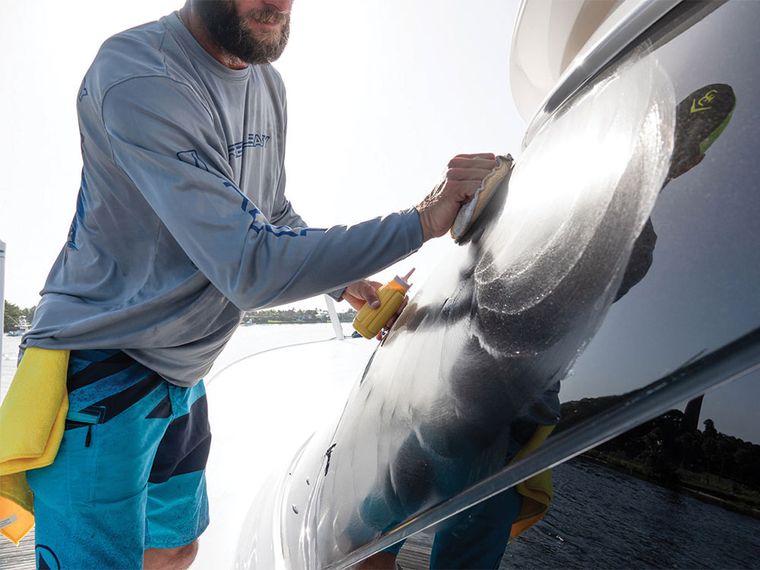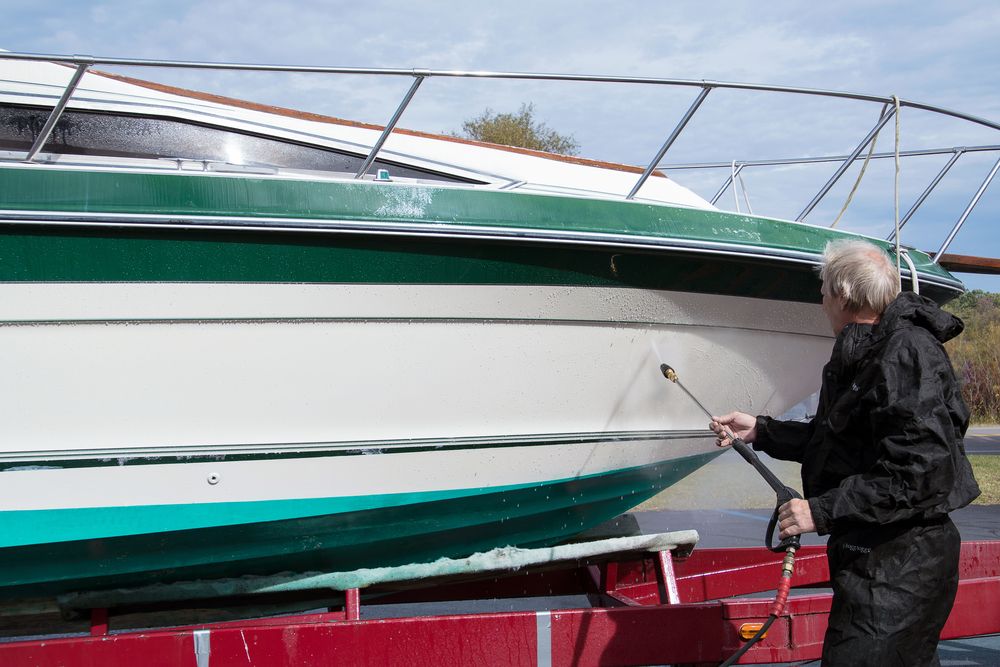Congratulations if you’ve made the decision to purchase a boat so you can live a more laid-back lifestyle! You’ll need to learn the ins and outs of boat maintenance if you own one. Learn how to wax a boat as part of this. A thorough waxing not only keeps a boat looking sharp, but is also a necessary step in routine cleaning that helps keep dirt and grime from abrading or staining visible surfaces over time. Read this article and you can learn how to wax your boat.
Why Is Waxing Important?
You might believe that your boat doesn’t require waxing. It will merely be submerged in water, so it must be kept clean at all times, right? Of course not, there are many ways for your boat to accumulate scum over time.
And what many owners overlook: the sun. You can prevent sun damage from occurring to your boat as quickly as possible by using a compound, wax, or boat polish with UV protection. Not only will this maintain the boat’s value, but it will also keep it looking good for many years to come.
Steps To Wax A Boat
Wash Your Boat
You must give your boat a thorough cleaning before you can begin the waxing process. After all, your boat will gradually develop dirt and grime from spending so much time in the water.
In addition to looking bad, a dirty boat may eventually sustain damage if routine maintenance is neglected.
You must take your boat out of the water and secure it to a trailer, whether it is a bunk trailer or a roller trailer before you can begin washing it. To prevent the boat from tipping over while you are washing it, make sure the trailer is resting on flat ground.
The interior of the boat should then be covered so that neither water nor the cleaning agent will get on it.
After that, you’ll wash the boat with a hose and apply boat soap to help get rid of the mud. If any stains have become particularly difficult to remove, you might need to use a sponge or damp cloth.

You’ll need to use a dewaxing solution, such as toluene, to remove any damaged wax you spot on your boat’s surface. After one last rinse, let the boat air dry.
Buff The Surface
After thoroughly cleaning your boat, use a polishing compound to remove any scratches and other flaws from the surface.
Polish is mildly abrasive, so when it is applied to your boat’s surface, it will remove the majority of flaws and stains. Use a buffing compound instead, which is more potent, if you see any significant discolorations. You’ll apply it the same way whether you use a buffing compound or a boat polish.
Working on small sections of the boat’s surface at a time, you should gently apply the polish. To apply the compound, use a soft cloth or a polishing pad on a buffing tool. Think about getting a wax applicator set so you have everything you need.
Apply the polish in a circular motion while going around the boat in the same direction. It’s important to work slowly and gently because you’re using an abrasive substance; otherwise, you risk damaging yourself.
You’ll know it’s time to stop when the surface becomes glossy and glassy. If you decided to use a buffing compound, you can repeat the procedure with polish if you want more shine.
Apply The Wax
Following that, the boat is waxed. The kind of surface on your boat will determine the kind of wax you need to use. The manufacturer’s recommendations should be consulted if you have any questions.
While our Boat Polish combines wax and polish, a deeper wax job will require a different wax product.
Consider the wax’s specific instructions before beginning once you’ve chosen the right one. In general, you’ll use the same circular motion that you used to buff the boat to apply the wax to its surface.
Once more, you have a choice between applying the wax by hand or using an electric waxing tool to facilitate the process. Just as you did before, move slowly around the boat, completing each section as you go.
After that, you must wait for the wax to dry for a few minutes, just long enough for it to appear hazy. You can proceed to the next step if you’re ready, according to that.
Buff The Wax
Finally, you’ll perform another round of buffing, using either your hands or a buffing tool. Working in the same circular motion, you’ll go around the entire boat.
You’ll start to see the surface get cleaner and shinier as you buff the wax, making your boat appear to be brand-new. Waxing completed, take a step back and enjoy your craftsmanship!
Use Electric Polishers And Buffers
To compound, polish, or wax a fiberglass boat, an electric polisher or buffer is a necessity.
The finish will be much better than applying it by hand and you’ll save hours of grueling labor. Remember that a random orbit polisher/buffer is more efficient than a circular polisher/buffer when looking for an electric polisher/buffer.
They are more adept at evenly distributing polish and removing wax without leaving circular swirls or streaks.
Because precision and control are necessary for polishing and waxing, a polisher/buffer spinning at a high OPM can cause more harm than good. For the best finish, invest in a polisher/buffer with adjustable speeds and the ability to operate at both high and low orbits per minute (OPM).
Never use power tools with a polishing or buffalo head on them, like electric drills or sanders.



